
Step 1
Before placing the two brown turkey biots (with the concave tips pointing out), place some dubbing material of the same color so that these open in the desired angle. Biots are tied right on the sides.
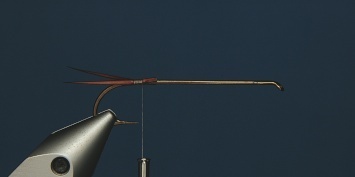
Step 2
Make a cigar-shaped under body with the single-strip yellow floss placed at a bobbin flare like the Griffin.
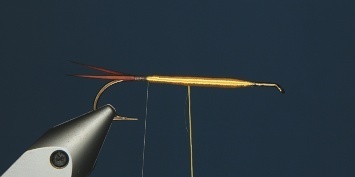
Step 3
Tie the two pins with the head right where we will finish the abdomen, this should be done with the tying thread at the sides of the floss body. If we can get very short pins, we will not have to cut them and then the fly will be closer to perfection.
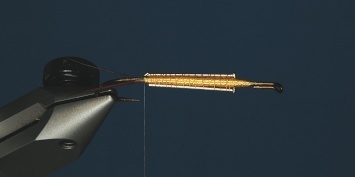
Step 4
With the tying thread, firmly set some transparent Vinil Rib in the ventral part of the fly, from the front and almost up to the tails, so that no elevations are formed. Then, cover the pins with more yellow floss, tying it right below the pin heads. Be careful not to cover the heads of the pins, these will be useful to lock the Vinil Rib.
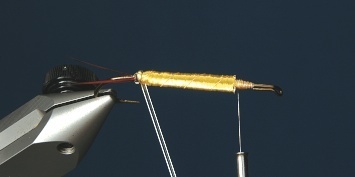
Step 5
Choose a pheasant feather, or similar, with an interesting barred; and cement it with transparent flexible cement, stretching it with our fingers as it dries up so that its width is the same than that of the abdomen back.

Step 6
Place the dry feather on the back of the abdomen and cover it with the transparent Vinil Rib, making sure the feather is perfectly centered on the back.
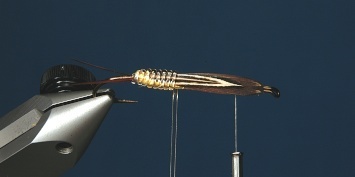
Step 7
The pin heads are there so that the last Vinil Rib turn does not fall to the front; because this would then complicate the tying of the thorax. Tie the Vinil Rib with the thread, right below and at the front of the pin heads.
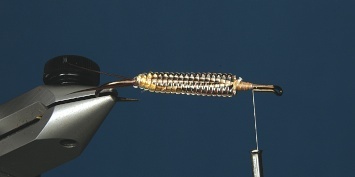
Step 8
It´s time to loop the copper wire, tying it firmly up until it reaches the pin heads. At the same time, use a Marc Petijean large saltwater tool to place a rabbit or squirrel strap, cutting the leather off leaving only the hair. The tips should be as long as the legs. The rest, which will point to the opposite side, should be sized according to the thorax width.

Step 9
When we make a loop, and thus the hair brush, we get the thorax and the legs material. George Grant used a hackle made with badger hair tied over two pieces of thread, but the method is very complex to be shown this time, so we found this simpler solution.
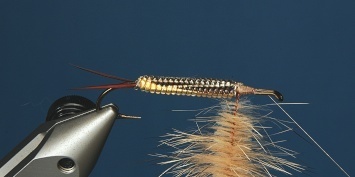
Step 10
Carefully wrap the rabbit or squirrel brush, combing it backwards in every turn so that the hair is not crushed (like we would do with chenille). Once the thorax is shaped, we should cut it at its back so that it flattens and does not lift the wing cases, yet to be made.
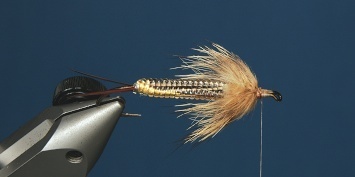
Step 11
Carefully pick two Hungarian feathers (or similar), this should be strongly barred and dense. Cement them trying to make one wider than the other, and both of them wider than the thorax.
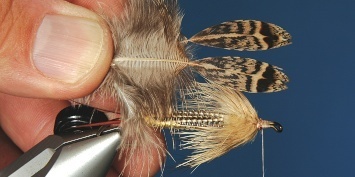
Step 12
With a metalic burner shape the wing cases of this stonefly and proceed to tie them one over the other.

Step 13
Finished fly image.
